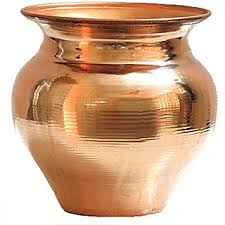The renowned American designer Charles Eames and his wife Ray Eames were once asked by the premier politician of a friendly country to evaluate the effect of Western technology, specifically design, on their culture. There was also the question of how the fledgling state could benefit from the Eames’s input.
The Eameses, true to their mode of working, went all in. In their report, submitted one year later, they went to great lengths to explain how true design is intuitive and yet evolutionary. As an example, Charles talked about the thinking that might go into designing a simple vessel that one might use to carry water.
- The optimum amount of liquid to be fetched, carried, poured and stored in a prescribed set of circumstances.
- The size and strength and gender of the hands (if hands) that would manipulate it.
- The way it is to be transported—head, hip, hand, basket or cart.
- The balance, the center of gravity, when empty, when full; its balance when rotated for pouring.
- The fluid dynamics of the problem, not only when pouring but when filling and cleaning, and under the complicated motions of head carrying—slow and fast.
- Its sculpture as it fits the palm of the hand, the curve of the hip.
- Its sculpture as complement to the rhythmic motion of walking or a static post at the well.
- The relation of opening to volume in terms of storage uses—and objects other than liquid.
- The size of the opening and inner contour in terms of cleaning.
- The texture inside and out in terms of cleaning and feeling.
- Heat transfer—can it be grasped if the liquid is hot?
- How pleasant does it feel, eyes closed, eyes open?
- How pleasant does it sound, when it strikes another vessel, is set down on ground or stone, empty or full—or being poured into?
- What is the possible material?
- What is its cost in terms of working?
- What is its cost in terms of ultimate service?
- What kind of an investment does the material provide as product, as salvage?
- How will the material affect the contents, etc., etc.?
- How will it look as the sun reflects off its surface?
- How does it feel to possess it, to sell it, to give it?
The country in question is India, of course, and this object under consideration is a lota, that traditional metal water vessel used across the subcontinent. In their report, they wrote:
Of all the objects we have seen and admired during our visit to India, the Lota, that simple vessel of everyday use, stands out as perhaps the greatest, the most beautiful.
The Eames Report was submitted to Pt Nehru and his cabinet in 1958, and in 1961, the National Institute of Design was founded in Ahmedabad, as an autonomous institute devoted to research, service and training in industrial design and visual communication. It now has five campuses across India, and is still going strong.
An interest in mid-century design had me reading about the Eames’ lives, specifically via the book The Eames Primer, written by Eames Demetrios, one of Ray and Charles’ grandchildren. The India episode came up as I flipped through the pages at a bookstore, and made me realize I had no idea that the couple were that closely entwined with the history of modern Indian design, specifically with NID, even though I have known and even worked with friends who were graduates from the institute.
While I did think of getting a classic Eames recliner when it showed up in Costco, of all places, the Herman Miller price-tag is a little too daunting for me at the moment. Seriously, if it is a toss-up between a chair and an entry-level Sandman page, you know I would pick the page.
But I could not resist picking up a knock-off Eames recliner from a local vintage furniture shop earlier this year. Turns out there were a lot of customers gnashing their teeth between the time I paid and the chair got delivered home.

